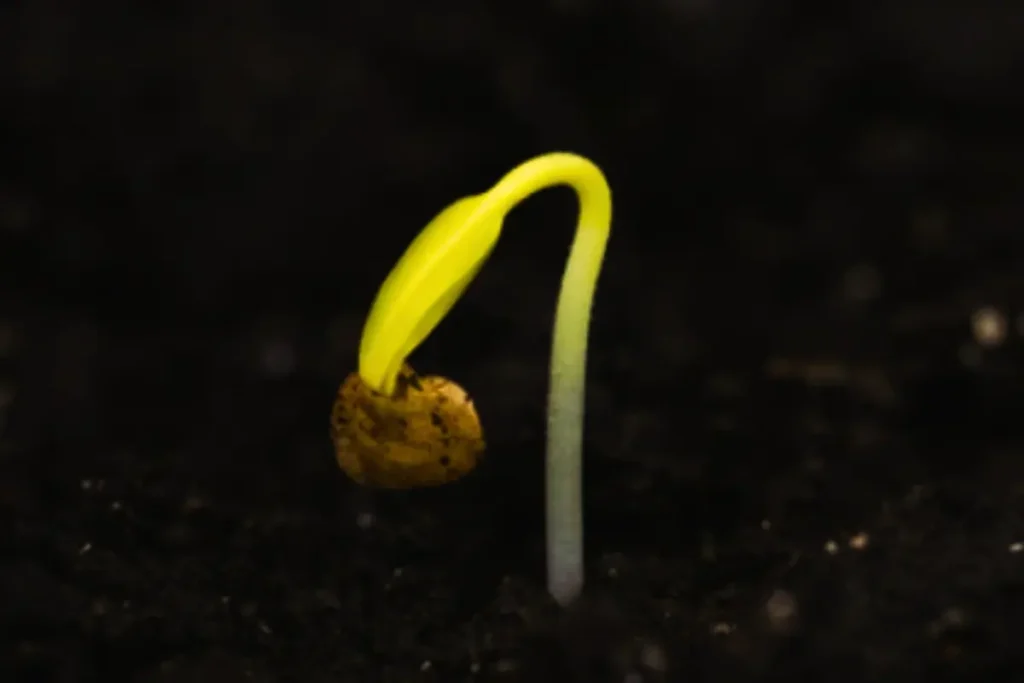Carolina Reaper: The World’s Hottest Pepper
Carolina Reaper
The Carolina Reaper is the world’s hottest pepper, captivating chili enthusiasts and thrill-seekers alike. Known for its extreme heat and unique flavor, this pepper has significantly impacted the culinary world. In this comprehensive article, we’ll delve into the origins, characteristics, cultivation, and culinary uses of this pepper. We’ll also explore its health benefits, potential risks, and the cultural phenomenon surrounding this fiery pepper.

Carolina Reaper History and Origin
The Birth of a Legend
The Carolina Reaper was developed by Ed Currie, a South Carolina pepper grower and founder of the PuckerButt Pepper Company. In 2013, the Guinness World Records officially recognized it as the world’s hottest pepper, boasting an average Scoville Heat Unit (SHU) rating of 1,641,183, with some individual peppers reaching over 2.2 million SHU.
Genetic Background
The Carolina Reaper is a crossbreed between a Pakistani Naga pepper and a Red Habanero. This genetic combination resulted in a pepper with unprecedented heat and a unique flavor profile that sets it apart from other hot peppers.
When exploring the world of hot peppers, it’s impossible to ignore the incredible diversity and unique flavors each variety brings to the table. Among the most well-known is the Scotch Bonnet Pepper, a staple in Caribbean cuisine, particularly in Jamaican dishes. Known for its vibrant, fruity flavor and moderate heat, it’s a favorite for adding both spice and sweetness to recipes. However, sometimes finding this specific pepper can be challenging, and that’s where a Scotch Bonnet Pepper substitute comes in handy.
One of the best substitutes for Scotch Bonnet is the Habanero Pepper. While the Habanero shares a similar fruity taste and a comparable level of heat, it tends to be slightly more accessible in many regions. This makes it an excellent alternative when you’re looking to recreate the distinctive flavor of Jamaican dishes but can’t find the original Scotch Bonnet.
Another pepper that is often discussed in the same circles is the Tabasco Pepper. Famous for being the key ingredient in Tabasco sauce, this pepper has a different flavor profile, offering a sharp, vinegary heat. While it doesn’t quite match the fruity notes of the Scotch Bonnet, it’s a versatile pepper that can be used in various dishes where you want to introduce a different kind of heat.
For those who enjoy exploring the spicier side of life, each of these peppers offers something unique. Whether you’re experimenting with the bold, fruity kick of a Habanero as a Scotch Bonnet Pepper substitute, or you’re adding a few drops of Tabasco sauce for a milder heat, the world of peppers is vast and full of flavors waiting to be explored.
While each pepper has its distinctive qualities, the versatility of peppers like the Habanero and Tabasco allows them to stand in for others when needed. So whether you’re cooking up a Jamaican classic with Scotch Bonnet or trying out a new recipe with Habanero or Tabasco, you’ll find that these peppers bring a vibrant and exciting heat to your culinary adventures
Physical Characteristics
Appearance
The Carolina Reaper is easily recognizable by its gnarled, wrinkled skin and characteristic stinger tail. The peppers typically measure 1.5 to 2 inches in length and have a bright red color when fully ripe. The pod’s surface is bumpy and uneven, giving it a menacing appearance that hints at its extreme heat.

Carolina Reaper Scoville
Heat Level
The Carolina Reaper’s heat level is what truly sets it apart. With an average SHU of 1,641,183 and peaks exceeding 2.2 million SHU, it far surpasses other hot peppers. For comparison, a jalapeño pepper typically ranges from 2,500 to 8,000 SHU, making the Carolina peppers several hundred times hotter.
Carolina Reaper Flavor Profile
Initial Flavor
The heat of the Carolina Reaper is intense and long-lasting. It starts with a slow burn that gradually builds to a peak, often leaving a lingering sensation that can last for several minutes. This prolonged heat experience is a significant part of the pepper’s appeal to chili enthusiasts.

The Heat Experience
The heat of this pepper is intense and long-lasting. It starts with a slow burn that gradually builds to a peak, often leaving a lingering sensation that can last for several minutes. This prolonged heat experience is a significant part of the pepper’s appeal to chili enthusiasts.

Cultivation and Growth
Growing Conditions
The Carolina Reaper thrives in warm, sunny climates with well-drained soil. It requires a long growing season, typically around 90 to 120 days from transplanting to harvest. The plants are relatively compact, reaching about 3 to 4 feet in height, and produce a bountiful harvest under optimal conditions.
Planting and Care
- Soil Preparation: Use well-drained soil enriched with organic matter.
- Sowing Seeds: Start seeds indoors 8-10 weeks before the last frost date. Maintain a temperature of 75-85°F for optimal germination.
- Transplanting: Transplant seedlings outdoors after the danger of frost has passed, spacing them 18-24 inches apart.
- Watering: Keep the soil consistently moist but not waterlogged. Water deeply and less frequently to encourage strong root development.
- Fertilizing: Use a balanced fertilizer every 2-3 weeks during the growing season.


Harvesting
Carolina Reapers are typically ready for harvest about 90 to 120 days after transplanting. The peppers should be fully red and firm to the touch. Use scissors or pruning shears to cut the peppers from the plant to avoid damaging the branches.

Culinary Uses
Hot Sauces and Salsa
Carolina peppers are a popular choice for making hot sauces and salsas. Their intense heat and unique flavor add a fiery kick to these condiments. When preparing hot sauces, it’s essential to use gloves and handle the peppers with care to avoid skin irritation.

Cooking and Recipes
- Spicy Dishes: Use Carolina peppers sparingly in soups, stews, and curries to add a powerful heat.
- Marinades and Rubs: Incorporate finely chopped or pureed peppers into marinades and rubs for meats.
- Chili Powders and Flakes: Dry and grind Carolina peppers to create ultra-hot chili powders and flakes.
Caution in the Kitchen
Due to their extreme heat, Carolina Reapers should be used with caution in the kitchen. Always wear gloves when handling the peppers and avoid touching your face or eyes. Ensure proper ventilation when cooking to avoid inhaling capsaicin fumes.

Nutritional Value and Health Benefits
Nutritional Profile
These peppers are rich in vitamins and minerals, including vitamin C, vitamin A, and potassium. They also contain capsaicin, the compound responsible for their heat, which has numerous health benefits.

Health Benefits
- Pain Relief: Capsaicin is known for its pain-relieving properties and is often used in topical creams for arthritis and muscle pain.
- Metabolism Boost: Consuming hot peppers can increase metabolism and promote fat burning.
- Anti-Inflammatory: Capsaicin has anti-inflammatory effects, which can help reduce inflammation in the body.
- Antioxidant Properties: The vitamins and antioxidants in Carolina Reapers can help protect cells from damage and support overall health.
Potential Risks and Precautions
Handling Precautions
Due to their extreme heat, these peppers can cause severe skin and eye irritation. Always wear gloves when handling the peppers and wash your hands thoroughly after use. Avoid touching your face, especially your eyes, to prevent painful burns.
Consumption Risks
While consuming small amounts of this pepper can provide health benefits, eating large quantities can cause gastrointestinal distress, including stomach pain, nausea, and vomiting. People with a low tolerance for spicy foods or those with certain medical conditions should avoid consuming these peppers.
Allergic Reactions
Some individuals may experience allergic reactions to Carolina Reapers. Symptoms can include skin rashes, itching, and difficulty breathing. If you experience any adverse reactions, seek medical attention immediately.
The Cultural Phenomenon
The Heat Challenge
Now this pepper has become a cultural phenomenon, with many thrill-seekers attempting the “Carolina Reaper Challenge.” This involves eating a whole pepper or consuming large quantities in one sitting. While entertaining to watch, these challenges can be dangerous and are not recommended.
Media and Pop Culture
This pepper has been featured in various media outlets and television shows, often highlighting its extreme heat and the reactions of those brave enough to try it. This pepper has gained a cult following, with many enthusiasts seeking out products and recipes featuring the Carolina Reaper.
Festivals and Events
Hot pepper festivals and events often feature the Carolina Reaper as a star attraction. These events celebrate the culinary and cultural significance of hot peppers, offering tastings, competitions, and educational sessions about growing and cooking with these fiery fruits.
Carolina Reaper Products
Hot Sauces and Condiments
Hot sauces of this pepper and condiments are widely available and popular among spice lovers. These products vary in heat intensity and flavor profiles, allowing you to find the perfect addition to your meals.
Snacks and Treats
From spicy chips to fiery candies, these pepper-infused snacks and treats offer a unique and intense flavor experience. These products are often marketed towards those seeking extreme heat and a thrilling eating experience.
Cooking Ingredients
Dried Carolina peppers, chili powders, and flakes are available for home cooks who want to experiment with adding intense heat to their dishes. These ingredients can be used sparingly to enhance the flavor and heat of various recipes.
The Future of Carolina Reaper
Breeding and Hybridization
Plant breeders continue to experiment with breeding and hybridizing new varieties of hot peppers, including those that may rival or surpass the heat of this pepper. These efforts aim to create peppers with unique flavors, heat levels, and growing characteristics.
Culinary Innovations
Chefs and home cooks are constantly finding new ways to incorporate these peppers into their culinary creations. From gourmet dishes to innovative hot sauces, the culinary potential of the Carolina pepper is vast and continually evolving. The challenge of balancing its extreme heat with other flavors is driving innovation in kitchens around the world.


